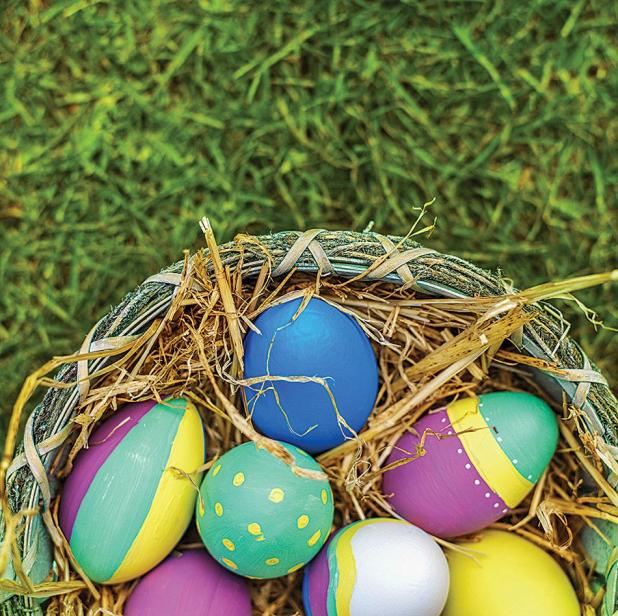
Cracking the tradition of hiding Easter eggs
Come Easter Sunday, eager children wake up to see if the Easter Bunny has visited their homes. For many families, Easter would not be the same without an annual egg hunt. From chocolate confections to money-filled plastic shells to colorful, hand-decorated hard-boiled eggs, the Easter Bunny (and his parental helpers) hide eggs all around.
As with many traditions, people may engage in the festivities without really understanding the origins behind the fun. It can be interesting to unearth just how such egg hunts were hatched.
As with many religious traditions, Easter egg coloring and hunts trace their origins to pre-Christian societies. These societies developed rituals surrounding nature, the seasons and more.
Some traditions were adapted to link them to the Christian faith. Eggs held associations with new life and spring. However, early Christians turned the egg into a symbol of the Resurrection and the empty shell became a representation of Christ’s tomb. Eggs also were important components of the Easter holiday, as they were prohibited (like meat) during Lent. But on Easter, fasting ended and eggs were a part of Easter celebrations, particularly for the poor who couldn’t afford meat.
There are two widely known accounts of the origins of Easter egg hunts. The religious version has Protestant reformer Martin Luther organizing hunts for his congregation. The men would hide the eggs for women and children to find, which mirrors Resurrection accounts in the Bible in which women discovered Christ’s empty tomb.
Another account traces the tradition to the Dutch tale of the ‘Oschter Haws’ (‘Osterhase’ in German), which was a hare that laid eggs in the grass. Children would build and decorate nests for the eggs and wait to see if they would be populated, according to Discovery.com. This tradition became popular in America with the arrival of Dutch and German settlers in Pennsylvania in the 1700s.
By the 20th century, decorated Easter nests were replaced with baskets, and Osterhase was more affectionately known as the Easter Bunny, who chose to leave eggs as well as treats and candy. Easter celebrations continued to marry both the religious and secular to form many of the customs that are known widely today.
Easter egg hunts are enjoyed by the young and old on Easter. They’re a key part of celebrations. Just remember to find all those hard-boiled eggs in a timely fashion.
This year, Easter celebrants may want to experiment with different materials that are more forgiving and more enduring than standard eggs.
Wooden eggs
Families may find that wooden eggs are much more forgiving than standard eggs. Wooden eggs don’t have to be boiled, and they don’t need time to harden, and they’re quite maneuverable for young fingers.
Decorators can explore different ways to color wooden eggs. Acrylic paints are readily available and safe for users of any age. Wood stains or wood markers also can be used to give the eggs a natural finish. Others may want to rip small pieces of decorative paper to create a decoupage effect on their wooden eggs.
Sew soft eggs
Those who are handy with a needle and thread can explore patterns for making soft, stuffed eggs. Cozy fleece or other fabrics can be sewn together to make the egg shape.
Then the egg is filled with polyester filling, feathers or another soft material. Ribbons, buttons, trims, and other decorative touches can personalize the eggs and add a touch of whimsy. Check out www.sew4home.com for ideas on handmade Easter eggs.
Modeling clay
Children who love to get their hands dirty may enjoy making Easter eggs out of modeling materials. Colors can be blended together to create a marbleized effect. Depending on the clay medium, the eggs may air-harden or may need to be heated at a low temperature in the oven to fully cure.
Easter eggs are a fun tradition that adds to the festivity of spring. While traditional eggs can be used, many different, more long-lasting materials can be used as well.
